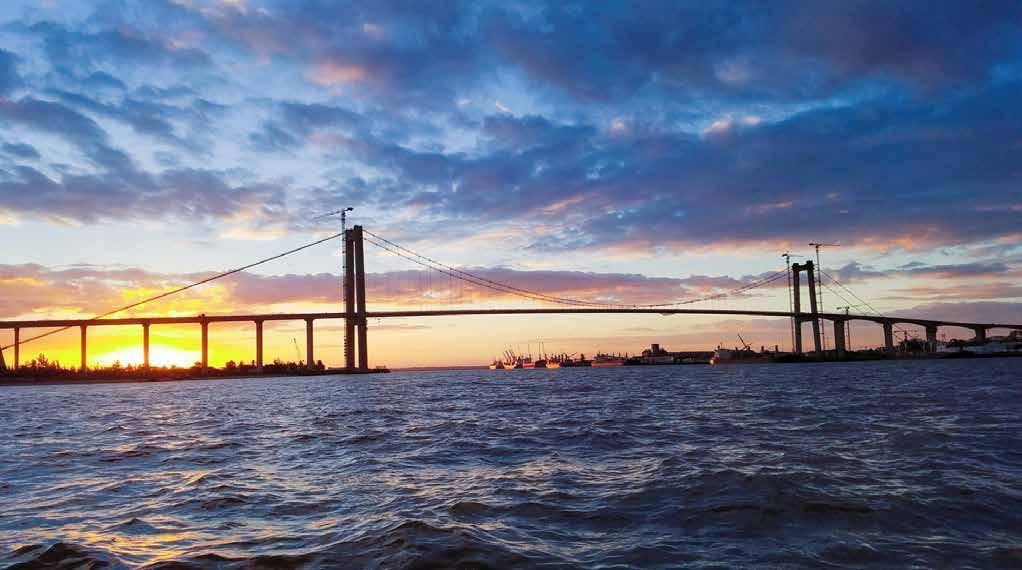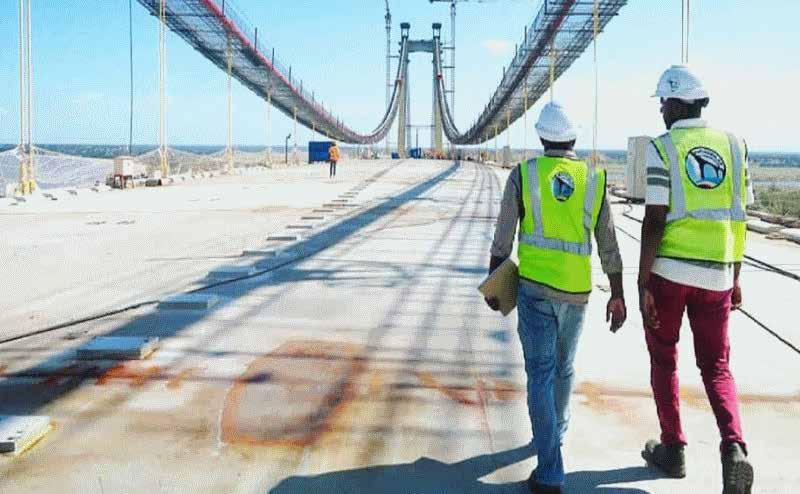
5 minute read
ANE Mozambique
MARKING THE ROAD AHEAD FOR MOZAMBIQUE
With a coastline stretching over 2,000 kilometres, Mozambique, in southeast Africa, is home to some of the most stunning, preserved beaches in the world. Technically, this paradise should be more accessible than those in more popular tourist destinations like the Maldives and the Seychelles, but a historical lack of infrastructure has hindered progress on this front until now.
Advertisement
Thankfully, things are changing in Mozambique. The National Road Administration (ANE, from the Portuguese Administração Nacional de Estradas) is responsible for developing the country’s road network, a crucial element of any country’s long-term strategy for tourism, trading and more. Over the past few years, it has made massive strides in moving Mozambique forward.
A government organization, the ANE has recently stepped up its efforts to improve the nation’s road infrastructure, and there are already tangible signs that this work is paying dividends. We decided to look at the positive impact that these changes are already making on the lives of the Mozambican people, and how modernization of the road networks by the ANE reflects broader changes happening in the country.
Origins and Early Days
The ANE is an autonomous public company, founded in 1999 with the stated aim of “guaranteeing the connection and transport of people, goods and services in a way which is secure, economical and sustainable, contributing to the economic, social and cultural development of the country.” Its stated vision was to become a reference for road transportation on the continent of Africa.
The importance of the ANE to Mozambique was underlined right at the outset. In 2001, it played a central role in bringing the country’s road network back to normality after severe floods hit in 2000. This importance was further emphasized by a World Bank report at the time, which showed that the share of ‘good and fair’ roads in Mozambique increased from 25% in 1996 to 56% in 2002. 2002 was also a big year for the ANE with the development of the N4 Toll Road Witbank creating a southern corridor to connect Mozambique with South Africa. Traffic on
the road grew by around 5-7% per year. The impact on trade was almost immediate and astonishing; in 2001, the year before the road was operational, Mozambican exports to South Africa were US$76 million; by 2012, this figure had grown to US$951 million.
As the first road concession project in the country, the N4 Toll Road brought about a change in thinking for Mozambique’s roads: progress could be sped up considerably through utilizing investment from different sources. The lessons learned on the project are already being put into action on a number of other projects, which will bring Mozambique’s road network to a new patamar.
Delivering on its Mission
A prime example of the ANE’s rethinking of road financing could be seen in 2016, when it announced in 2015 that the road between Nampula and Nametil, a distance of 72 kilometres that included six bridges and 49 aqueducts. The project was financed with a loan from the South Korea ImportExport Bank. Its new experience with project finance meant that the ANE could scale up its operations far faster than before.
In 2018, the ANE announced that it was opening up the concessions of four roads, all connections from the EN1 highway, which would link three separate regions


of the country. This initiative was followed in 2019 by the announcement of new 30-year concessions for five national roads. This includes construction, upgrades and maintenance and the transfer back to Mozambique after the concessions end.
The EN1 highway, running north to south, is seen as pivotal to Mozambique’s ambitions in the development of its roads. When the suspension bridge over the Bay of Maputo was completed in late 2018, its connection with 115 kilometre road southward effectively extended the EN1 to around 2,600 kilometres. At the other end of the road, in the north, new paving will extend to the EN1 to reach over 3,000 kilometres in total, making it longer than the N2, the longest road in South Africa.
Impact of the ANE’s Work
The impact of the work that the ANE conduct is transformative. The growth in trade between Mozambique and South Africa over the past 15 years is just one indicator. Take the amount of time saved: a journey from Maputo, Zimbabwe’s capital, to the border with South used to take five hours. With the new road in place, it takes just over an hour to get there.
For the underprivileged in Mozambique, rural roads now provide access to essential medical services, schools, social facilities and a range of opportunities that were literally cut off to them before. The government also estimates that tourism levels doubled in just a year, after the delivery of new roads in 2018. Most of these were from neighboring South Africa but it points at huge potential in the future.
Then there’s the new road that connects Mozambique with Tanzania - the first time that a paved road has existed on this route. The “Unity Bridge” which crossed the Rovuma River that runs between the two countries, was built in 2010. And yet, it was unused because of a lack of roads on the Mozambique side. Now that these roads have been delivered, another trade route and a range of economic opportunities has opened. No wonder the President of Mozambique called it “a dream come true.”
The road ahead
The exponential growth of Mozambique’s economy over the past 20 years is indelibly linked to the establishment of the ANE. On its foundation in 1999, Mozambique had a GDP of around US$5 billion. By 2017, that had grown to around $12 billion and by some estimates, 2019 will be closer to $15 billion. Huge opportunities are arising everywhere in Mozambique however the team at ANE understand that opportunities are predicated on solving the current challenges as stated by the Director General of ANE, IP, Américo Dimande “the current challenges of ANE, which are enormous, and that each one must contribute, to jointly overcome them, mainly in the management of Human Resources, in the maintenance of roads, heritage and other areas”.
ANE MOZAMBIQUE
www.ane.gov.mz










